Historic Cocktails at the Waldorf’s Legendary Long Bar
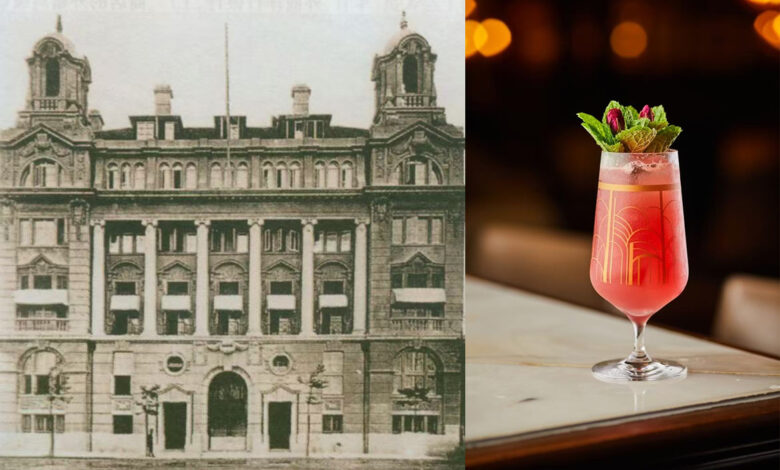
We’re here to talk about the new cocktail menu at the Long Bar at the Waldorf Astoria Shanghai on the Bund, one which “blends innovative mixology methods with a century of history.”
So we thought we’d take a little dive into that “century of history.” And then some. For long before there was the Waldorf Astoria Shanghai on the Bund, there was the Shanghai Club…
The Shanghai Club

Shanghai Club logo
The year was 1861, the Taiping Rebellion was raging, and Shanghai was being besieged by no less than five rebel armies.
They were eventually seen off by an alliance between the Qing Army and British and French troops, who used modern artillery on a large scale for the very first time in China.
Yet, a little commotion like war on your doorstep doesn’t seem to have hindered the British elite from establishing a gentlemen’s club.
“Those were the good old times,” explained British taipan Sir Thomas Sutherland, “when every Englishman in China was youthful, the great firms princely, the hospitality unbounded, and the prospect of achieving fortune with ordinary industry and luck appeared to every young fellow as assured.”
Awash in easy money, colossal, white Italianate and neoclassical buildings were beginning to appear on the Bund – what would come to be known as Shanghai’s ‘million-dollar skyline.’
Standing proudly at Number One, the Bund, and bankrolled by Shanghai’s most prominent taipans, was the three-story Shanghai Club, intended to be a men’s (and only men’s) club on par with the best in London and New York.
When former US President Ulysses S. Grant visited the city in 1879, it was the Shanghai Club that hosted him.
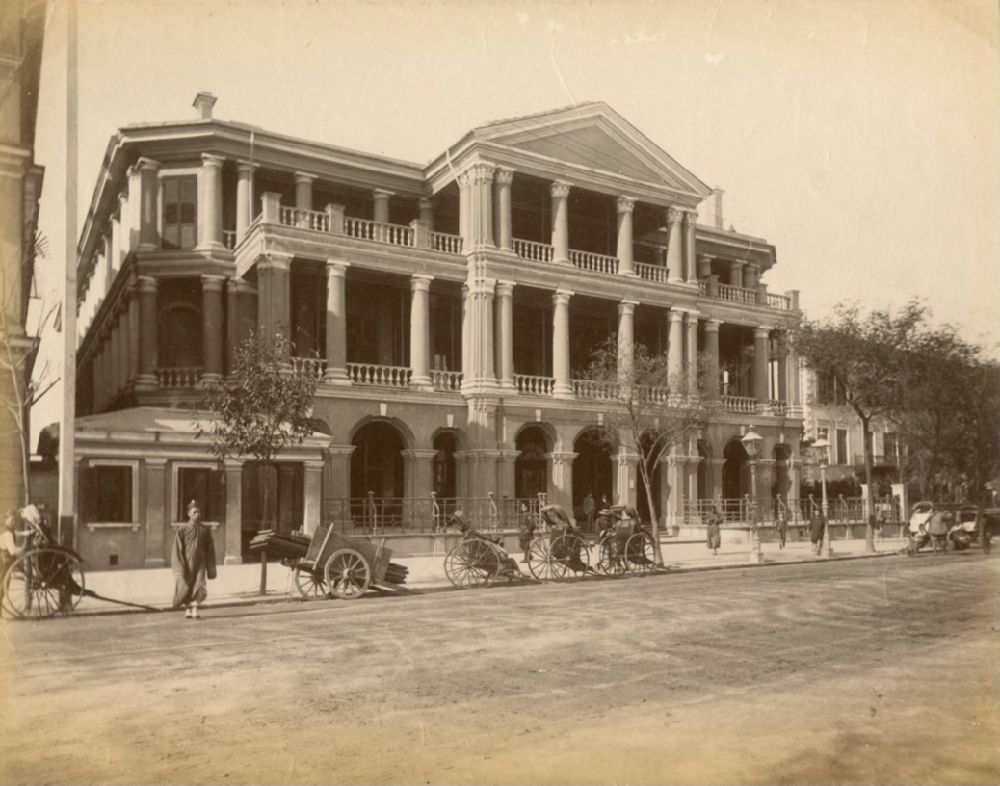
The original Shanghai Club building standing at Number One, the Bund
The historic building that houses the Waldorf Astoria Shanghai today, however, opened in 1911, after the Club’s original headquarters were torn down.
British architect Betram H. Tarrant designed the exterior in an English Renaissance style with Baroque Revival elements, featuring Corinthian columns and arched windows on a whitewashed façade.
The most extravagant of the Bund’s new edifices, in its heyday in the 1920s and ’30s the club was without doubt the most exclusive in Shanghai, and probably all of East Asia – an ornate, dark-paneled premises reeking of cigars, leather, brandy, and entitlement.

The Waldorf Astoria Shanghai on the Bund building, as it looked in its Shanghai Club era
The Long Bar
Forget the Club’s ballrooms, smoking rooms and large library, its most famed area was its celebrated Long Bar, so called because the 34-meter bar was claimed to be the longest in the world.
So long, in fact, that when English playwright and celebrated wit Noël Coward visited the establishment, he pressed his cheek against the wood and exclaimed that he could see the curvature of the earth.

The Famous Long Bar in the Shanghai Club 1912
If the Shanghai Club was the utmost expression of Shanghailander high society, then the Long Bar was a microcosm within this palace of wealth. The Club’s membership was the most select in Shanghai, and with it came a social hierarchy.
An unwritten rule was that taipans occupied the end of the bar closest to the large bay windows, which enjoyed vistas of the Huangpu River, while newcomers stood at the opposite, darkened end.
Residents measured their social progress by how far they had managed to inch along the hundred-foot stretch of polished mahogany, toward the light.
A businessman knew he had arrived when one day – months, but more likely years, after first setting foot in the Shanghai Club – he found himself at the Long Bar’s windows, swilling gin with Shanghai’s finest.
The Inbetween Years
The ‘never-ending party’ that was Old Shanghai, however, was to come crashing to an end; after the International Settlement was occupied by the Japanese in December 1941, the Shanghai Club came to house Japanese naval officers.
Upon the Communist takeover and founding of the People’s Republic, it was remodeled as the International Seamen Club, catering to foreign sailors.
In 1971, the building became the Shanghai Dongfeng Hotel. And then, in 1990, the Shanghai Dongfeng Hotel earned the dubious honor of opening the first KFC in the city.

Hungry customers enjoy KFC at the Shanghai Dongfeng Hotel, under the watchful eyes of those not so fortunate
From 1996 the building sat derelict, until it was leased by the Hilton in 2009, and converted to become the Waldorf Astoria Shanghai on the Bund…
The Here & Now
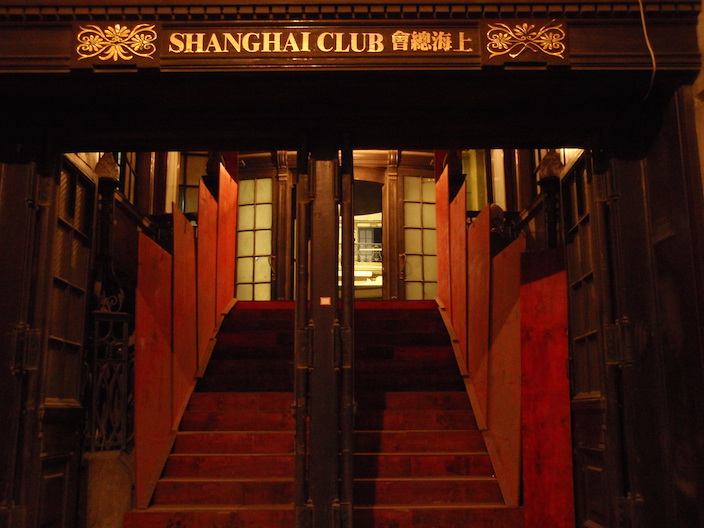
Image by That’s
When restoration of the space began, every element of the original Long Bar was carefully studied and reproduced from photographic records.
What stands today is an exact replica of the glamour and glitz of Shanghai’s yesteryear, coupled with a modern spread of drinks, snacks, a Cuban cigar selection, and live music.
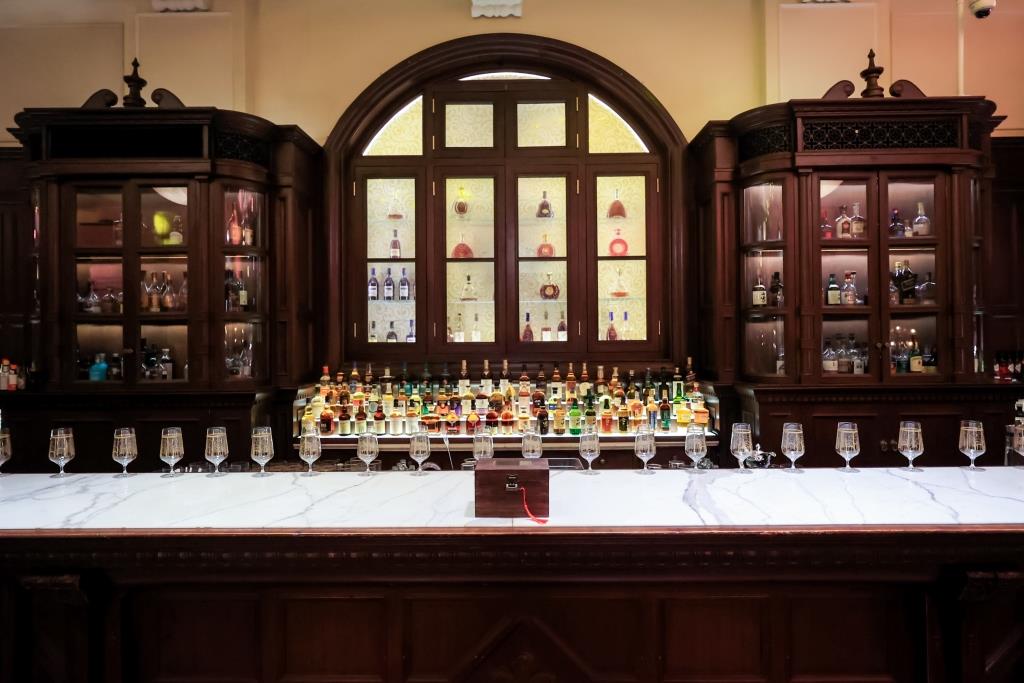
Image courtesy of the Long Bar
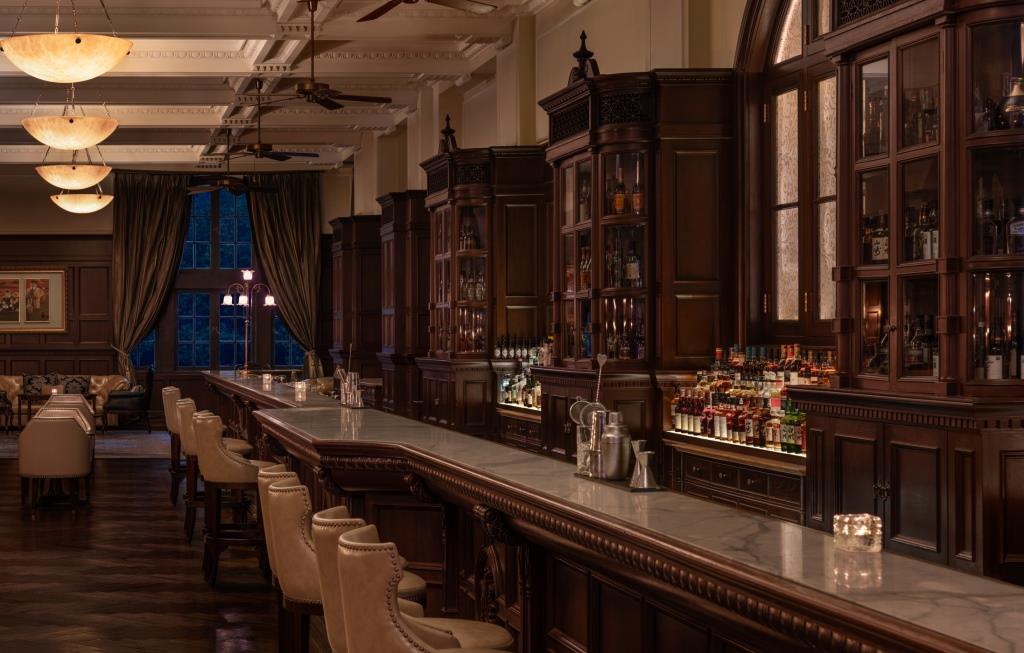
Image courtesy of the Long Bar
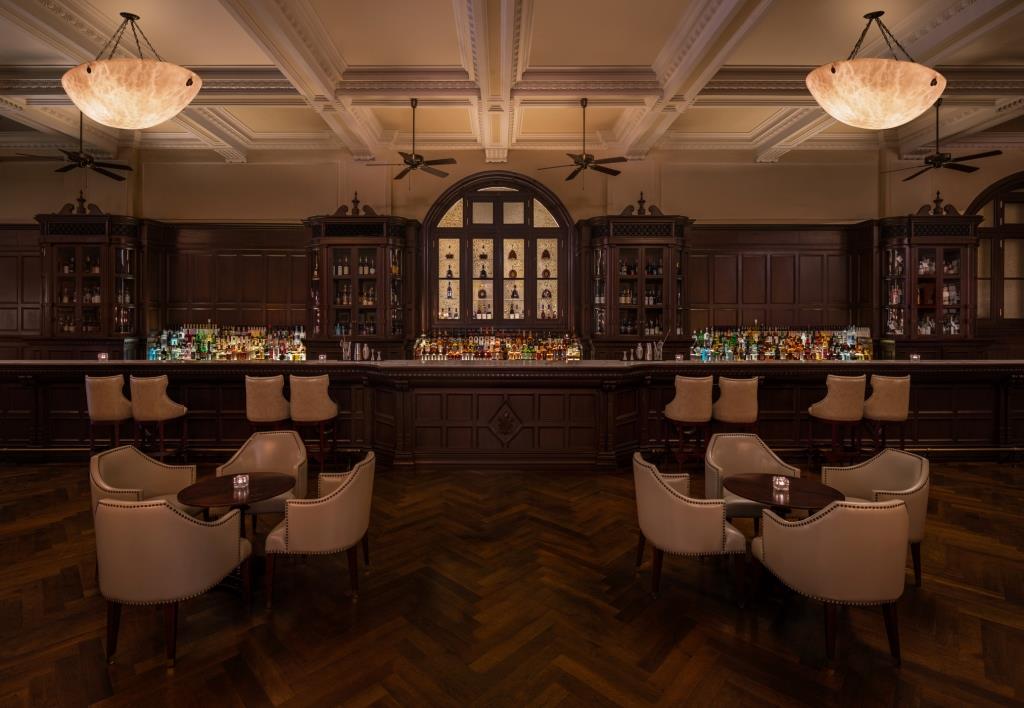
Image courtesy of the Long Bar
All of which brings us up to the present day, and the Long Bar’s new cocktail menu, which sees 17 drinks divided into four eras, with each drink representing the essence and culture of that period of history.
From the prosperity of the 19th century to the dynamic changes of the 20th century, and on to the green development vision of the 21st century, guests can not only enjoy masterfully crafted cocktails, but also savor a taste of the Bund’s storied past.
Here’s a look at four of them…
The Early Years
The Famous Shanghai Buck
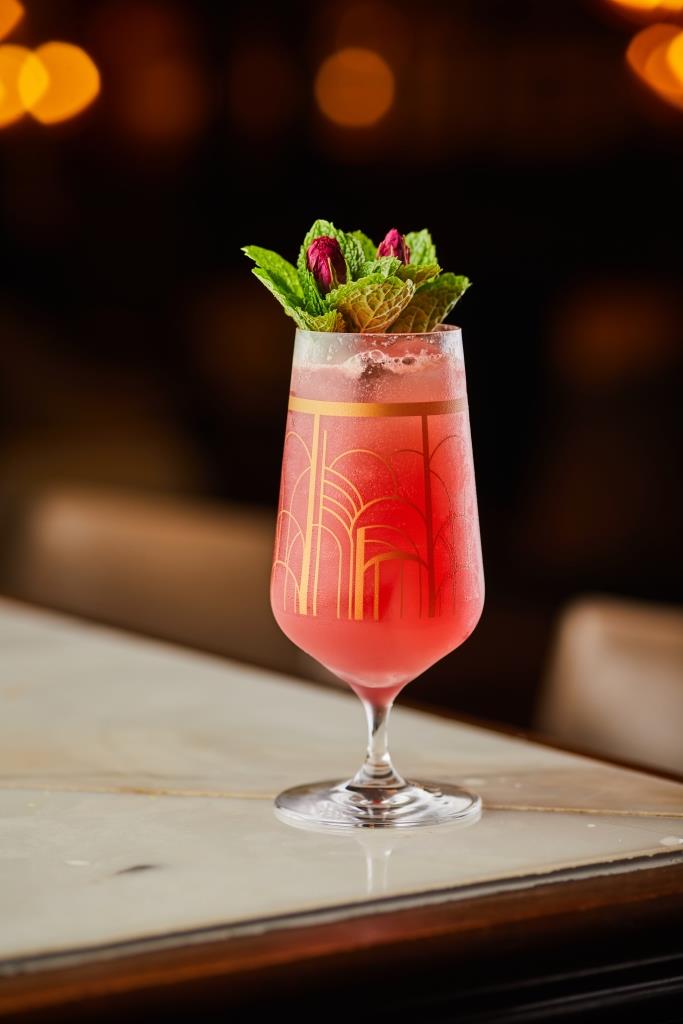
Bacardi Ocho | Shanghai Grenadine | Lime | Ginger Honey | Soda Water | Dried Roses
In 1911, the Long Bar introduced the Famous Shanghai Buck, China’s first classic cocktail, which created a sensation in the lobby of the Shanghai Club.
Today, the Long Bar has reimagined this iconic drink using modern mixology techniques, incorporating local ingredients like fresh pomegranate juice, orange peel, jasmine flowers, and Sichuan pepper.
The cocktail features a unique red pomegranate syrup, while beetroot adds color, and ginger syrup combined with honey replaces the traditional ginger beer, with soda water adding effervescence.
This refreshing yet bold cocktail transports guests to the roaring 1920s.
The Art Deco Era
Astoria Cocktail
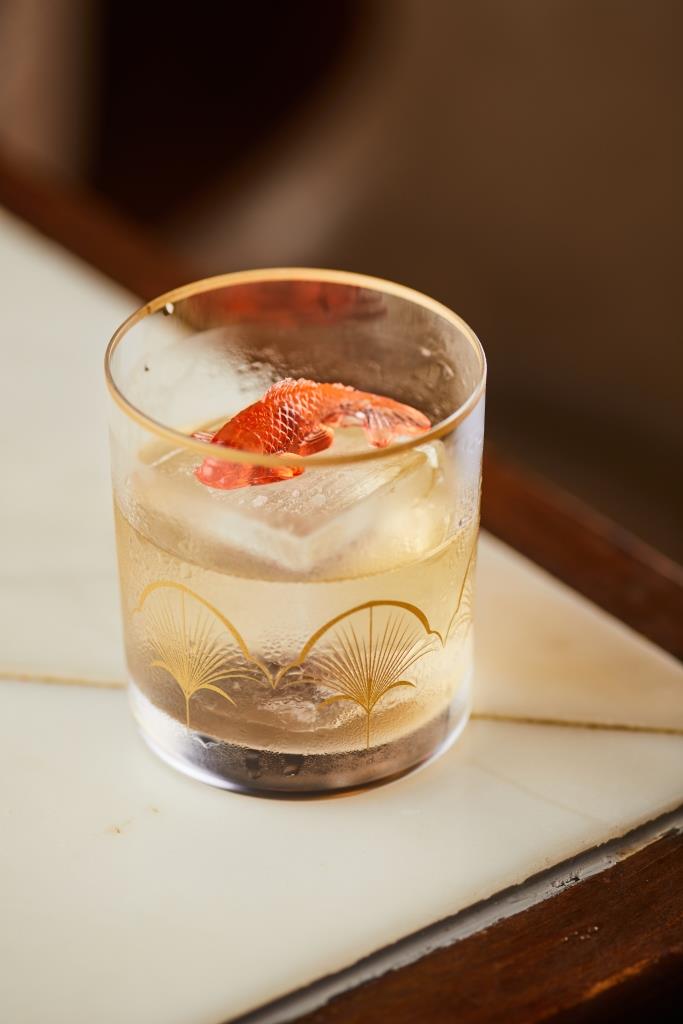
Tanqueray No.10 | Fino Sherry | Mancino Bianco | Mirin | Saline Solution | Melon | Oyster Shell
This cocktail draws inspiration from the classic Waldorf Astoria, combining the distinctive flavors of gin and white vermouth.
As the Bund once served as Shanghai’s fishing port, the traditional recipe is enhanced with oyster shell-infused white vermouth, bringing the essence of the sea to the drink.
A subtle sweetness of melon emerges on the finish, while homemade watermelon gummies, shaped like pink fish, pay homage to the Bund’s past, with references to the former waterfront restaurant, PIИK OYSTER.
The Bund’s Transformation
Second Tango
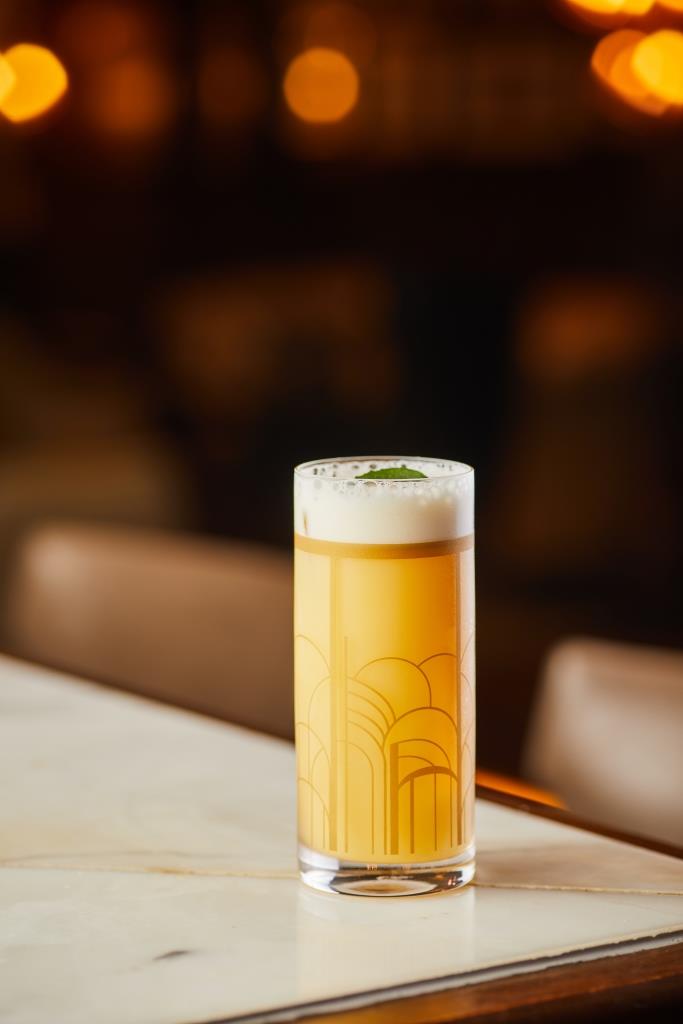
Ketel One | Yuzu Liqueur | Vanilla Yuzu Cold Cream | Espresso | Tonic Water
In the mid-20th century, the Bund became the heart of Shanghai’s jazz era, an integral part of the city’s nightlife.
Jazz music and coffee were all the rage, and cafes and bars became the social hubs of the time.
Drawing inspiration from this era, this cocktail blends the popular coffee tonic water with rich coffee aromas and the fresh citrusy notes of grapefruit, topped with the effervescent bubbles of tonic water.
Whether relaxing to jazz melodies or seeking inspiration in a dance rhythm, this cocktail will energize and uplift.
Towards the Future
Green Revolution

Don Julio Blanco | Mancino Secco | Dolin Genepy | Mezcal | Lime Juice | Toasted Brown Rice | Pineapple | Dill | Soda Water
In tribute to Shanghai’s green revolution in the 21st century, this cocktail combines the warm aroma of roasted brown rice with the fresh flavors of pineapple and dill, symbolizing the harmonious coexistence of the modern city and nature.
With its herbal freshness, this drink celebrates the city’s growing green spaces. It is more than just a flavor experience; it is a tribute to sustainability, a green future, and urban vitality.

Image courtesy of the Long Bar
Why the illustration rather than a photo for that last cocktail?
Adding to the whole experience, the Long Bar has introduced a wooden menu box, which contains cards that explain each historical period – providing guests with a cultural and historical understanding of each era – as well as beautiful, hand-drawn illustrations of each cocktail.

Image courtesy of the Long Bar
Finally, guests who enjoy one signature cocktail from each of the four eras receive an exclusive ‘off-menu’ cocktail on the house, adding an extra layer of exploration to your journey.
So there you have it – head along to the Long Bar for a taste of history!
Long Bar, Waldorf Astoria, Heritage Building, Lobby Level, 2 Zhongshan Dong Yi Lu, by Guangdong Lu, Huangpu District 上海外滩华尔道夫酒店,中山东一路2号, 近广东路


